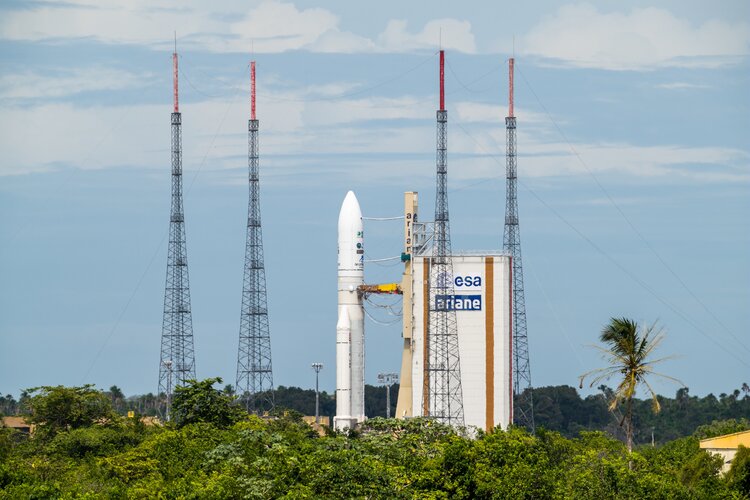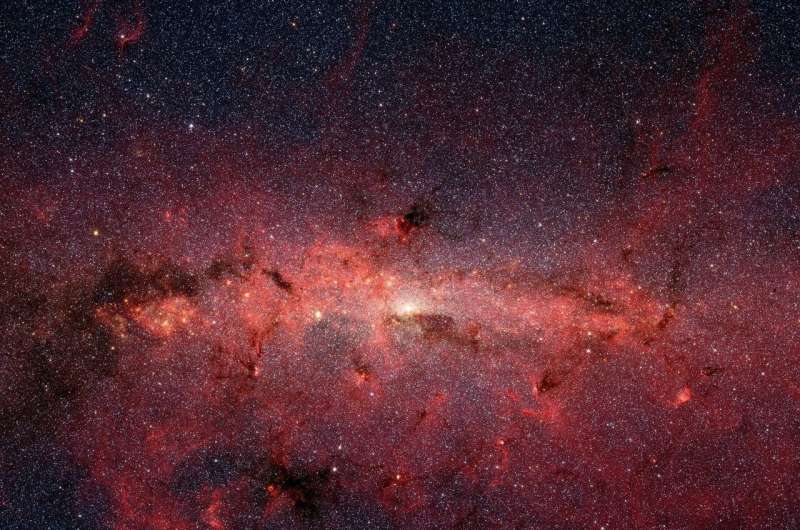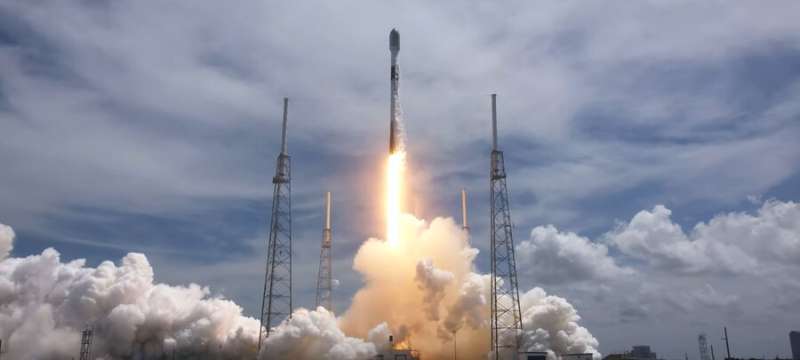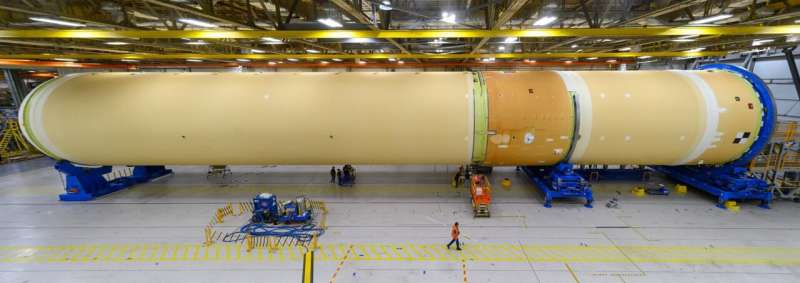
Copernical Team
Poland's only cosmonaut, who circled Earth in 1978, has died

Poland's only cosmonaut, Gen. Miroslaw Hermaszewski, who circled the Earth in a Soviet spacecraft in 1978, has died. He was 81.
The retired air force pilot's death on Monday was announced via Twitter by his son-in-law, European Parliament member Ryszard Czarnecki. He later told Polish media outlets that Hermaszewski died at a hospital in Warsaw of complications from a surgery he had undergone in the morning.
"On behalf of the family, I'm confirming the very sad news about the death of Gen. Miroslaw Hermaszewski," Czarnecki tweeted, calling him a "great pilot, good husband and father, and much beloved grandfather."
Hermaszewski became a national hero thanks to his trip to space. For nine days in June and July of 1978, Hermaszewski and Soviet cosmonaut Pyotr Klimuk circled the Earth in the Soyuz 30 spaceship that docked at the Salyut 6 orbital space station. They went around the globe 126 times.
In an 2018 interview with the Polish newspaper Rzeczpospolita, Hermaszewski said his biggest fear during the flight was that their spacecraft would be struck by a meteor. His and Klimuk's senses were sharpened, catching even the smallest sound, he said.
Orion splashes down in Pacific Ocean after trip around the moon
 NASA's Orion capsule, after traveling 1.4 million miles through space, including orbiting the moon and collecting data, returned to Earth on Sunday.
The 25 1/2-day Artemis I mission landed in the Pacific Ocean off Mexico's Baja California at 12:40 p.m., NASA reported.
"Splashdown! From Tranquility Base to Taurus-Littrow to the tranquil waters of the Pacific, the latest chapter of
NASA's Orion capsule, after traveling 1.4 million miles through space, including orbiting the moon and collecting data, returned to Earth on Sunday.
The 25 1/2-day Artemis I mission landed in the Pacific Ocean off Mexico's Baja California at 12:40 p.m., NASA reported.
"Splashdown! From Tranquility Base to Taurus-Littrow to the tranquil waters of the Pacific, the latest chapter of FAST reveals unprecedented details of the Milky Way
 Many bright stars gather in the night sky and form a Milky Way across the sky. It is our home galaxy in the vast universe, however, the structure and composition of the Milky Way are mysterious yet. The vast interstellar space between the billions of stars is not empty, but filled with tenuous interstellar medium.
The diffuse hydrogen gas radiates a spectral line with a frequency of around
Many bright stars gather in the night sky and form a Milky Way across the sky. It is our home galaxy in the vast universe, however, the structure and composition of the Milky Way are mysterious yet. The vast interstellar space between the billions of stars is not empty, but filled with tenuous interstellar medium.
The diffuse hydrogen gas radiates a spectral line with a frequency of around Scientists find new hints that dark matter could be made up of dark photons
 Dark matter could be made up of ultralight dark photons that heated up our universe: this is a new scenario proposed in a study recently published in the scientific journal "Physical Review Letters". This hypothesis, the authors say, is in excellent agreement with observations made by the Cosmic Origin Spectrograph (COS) on board the Hubble Space Telescope, which takes measurements of the "cosmi
Dark matter could be made up of ultralight dark photons that heated up our universe: this is a new scenario proposed in a study recently published in the scientific journal "Physical Review Letters". This hypothesis, the authors say, is in excellent agreement with observations made by the Cosmic Origin Spectrograph (COS) on board the Hubble Space Telescope, which takes measurements of the "cosmi US set to announce nuclear fusion breakthrough
 The US Department of Energy said Sunday it would announce a "major scientific breakthrough" this week, after media reported a federal laboratory had recently achieved a major milestone in nuclear fusion research.
The Financial Times reported Sunday that scientists in the California-based Lawrence Livermore National Laboratory (LLNL) had achieved a "net energy gain" from an experimental fusio
The US Department of Energy said Sunday it would announce a "major scientific breakthrough" this week, after media reported a federal laboratory had recently achieved a major milestone in nuclear fusion research.
The Financial Times reported Sunday that scientists in the California-based Lawrence Livermore National Laboratory (LLNL) had achieved a "net energy gain" from an experimental fusio MTG-I1 rolled out and good to go

With liftoff set for today at 21:30 CET, the Ariane 5 rocket carrying the first Meteosat Third Generation Imager, MTG-I1, satellite is poised patiently on the launch pad at Europe’s Spaceport in French Guiana while the final checks are being carried out. Once in geostationary orbit, 36,000 km above the equator, this new satellite is set to herald a new era for meteorology.
Proposal for picogram-scale probes to explore nearby stars

In a forward-looking article, George Church, Ph.D., from Harvard University and the Wyss Institute, proposes the use of picogram to nanogram-scale probes that can land, replicate, and produce a communications module at the destination to explore nearby stars. The new article is published in a special issue on "Interstellar Objects in Astrobiology" of Astrobiology.
"One design is a highly reflective light sail, traveling a long straight line toward the gravitational well of a destination star, and the photo-deflected to the closest non-luminous mass—ideally a planet or moon with exposed liquid water," states Dr. Church.
"Most living cells on Earth are picogram-scale and yet perform functions, such as replication from only simple chemical inputs, impossible for all current human-made machines," notes Dr. Church. He considers factors such as acceleration and deceleration, and how to build communications devices using some form of electromagnetic radiation. Environments suitable for microbial replication require appropriate temperature, chemicals, and energy sources.
"Clearly, a considerable amount of work remains for improving the theory, design, and testing aspects of this proposal, some of which can be done on Earth or within our home solar system," concludes Dr.
Tiny satellite tests autonomy in space

In May 2022, a SpaceX Falcon 9 rocket launched the Transporter-5 mission into orbit. The mission contained a collection of micro and nanosatellites from both industry and government, including one from MIT Lincoln Laboratory called the Agile MicroSat (AMS).
AMS's primary mission is to test automated maneuvering capabilities in the tumultuous very low-Earth orbit (VLEO) environment, starting at 525 kilometers above the surface and lowering down. VLEO is a challenging location for satellites because the higher air density, coupled with variable space weather, causes increased and unpredictable drag that requires frequent maneuvers to maintain position. Using a commercial off-the-shelf electric-ion propulsion system and custom algorithms, AMS is testing how well it can execute automated navigation and control over an initial mission period of six months.
"AMS integrates electric propulsion and autonomous navigation and guidance control algorithms that push a lot of the operation of the thruster onto the spacecraft—somewhat like a self-driving car," says Andrew Stimac, who is the principal investigator for the AMS program and the leader of the laboratory's Integrated Systems and Concepts Group.
Arrakhis: The tiny satellite aiming to reveal what dark matter is made of

The European Space Agency (ESA) recently announced a new mission of its science program: a small telescope orbiting the Earth dubbed Arrakhis. But although its name is inspired by the sci-fi novel Dune, it will not be looking for sandworms or "spice" on a desert planet.
Instead, this nimble satellite will punch hugely above its weight and try to track down one of the most elusive and mysterious substances in the universe: dark matter. This is the term given to the hypothetical invisible matter that is thought to be more abundant than normal matter and have a similar gravitational effect on its surroundings.
The mission is classified as fast (F), which means it is smaller, more focused and has a quicker turnaround (less than ten years to launch) than other types of ESA missions. The agency's previous F-mission, selected in 2019, is called the Comet Interceptor. Already parked at a stable point in the Solar System, this probe is waiting for a comet to show up and fly by it, something that's due to happen around the time that Arrakhis launches in the early 2030s.
NASA commits to future Artemis moon rocket production


